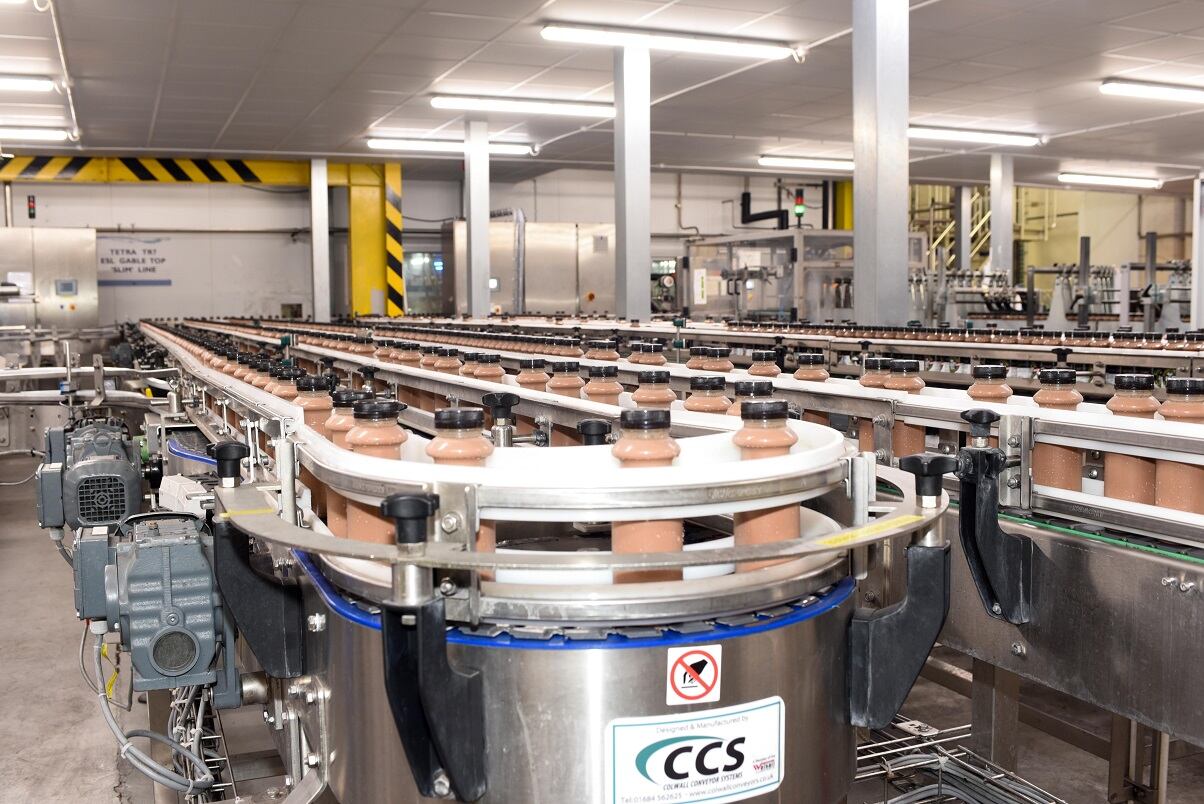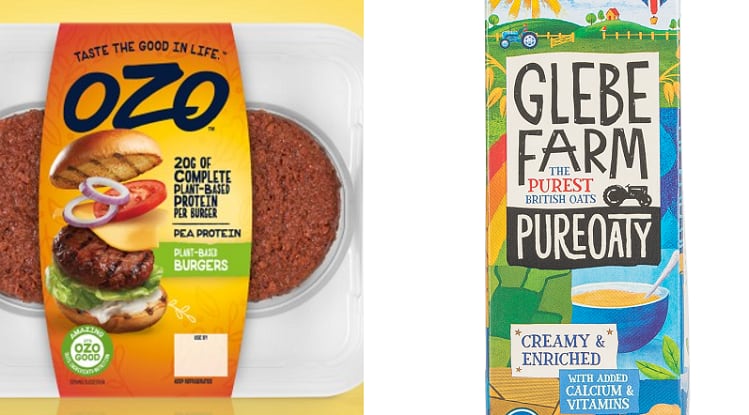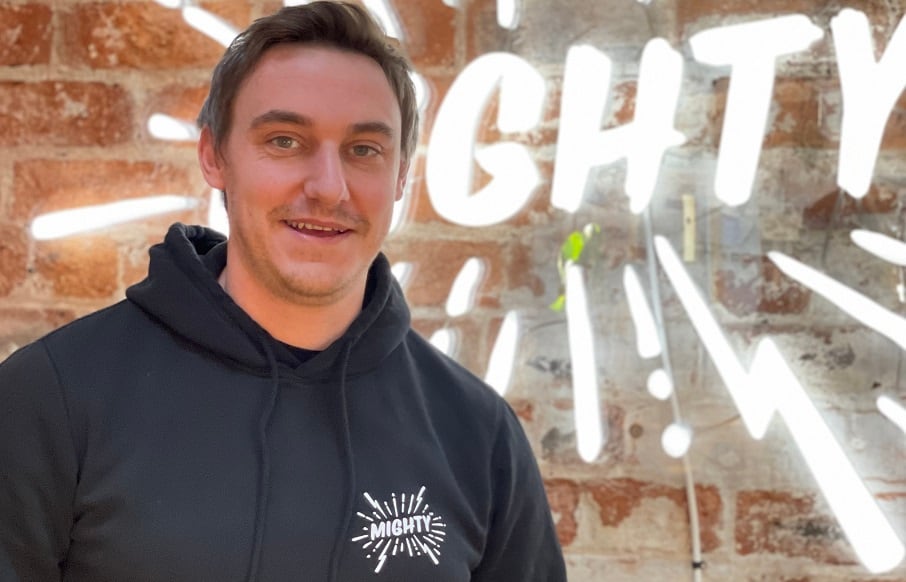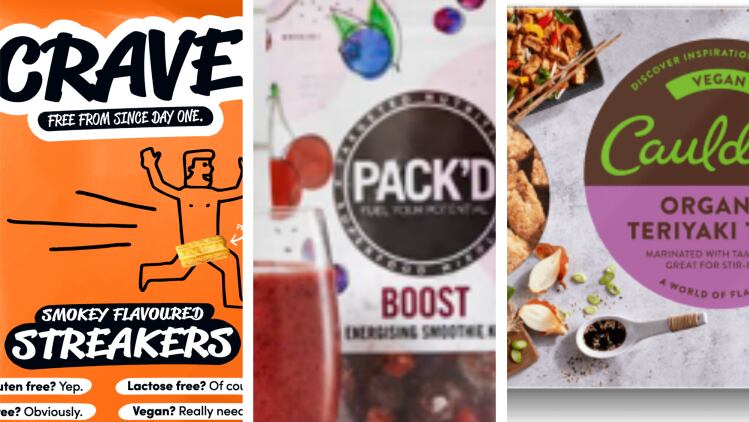Operations director Andy Rimell and business development director Will Martin discuss the company’s evolution in a profile written in collaboration with the BCMPA, the Association for Contract Manufacturing, Packing, Fulfilment & Logistics.
Company overview
Background: Framptons was founded in 1898 as an egg packing and wholesale operation, moving into egg processing in the 1960s.
Production sites: One location in Shepton Mallet, comprising five industrial units
Size: Units total 11,000m2 on a 41,000m2 site
Output: 2m litres/week
Capacity: 4m litres/week
Current capabilities: High-volume contract manufacturing, packing, extended shelf life and aseptic filling and small-batch product development work for plant-based and dairy drinks, spring water, juices, smoothies, cooked egg, and liquid egg products.
Customers include: Delamere Dairy, Mighty Pea and other brand owners for retail, catering and industrial use.
Annual turnover: c.£50m
Number of employees: 300
The leadership team
Martin joined Framptons in 1999 as factory manager, becoming operations director and then joint business owner following a management buyout in 2014. After a period as commercial director he has ended up in business development, supporting an operational board, including Rimell.
Other personnel include managing director Simon Hayward and finance director John Edwards. James Mills is head of commercial with a view to becoming commercial director.
Rimell spent 18 years in the Royal Navy as an engineer, then took on supply chain posts with St Ivel and Sainsbury’s.
He spent 14 years in dairy at Yeo Valley, starting in engineering and working up to general management. He spent seven years in a desserts and ice cream factory, turning it from loss-making into profit-making, then worked on ready meals for 18 months with Oscar Mayer.
He spent time independently helping small manufacturers through COVID with business strategy, then joined Framptons, with Mills implementing projects Martin secured and pulling the site out of COVID.
In the past year, Framptons has restructured its top team following cost-cutting in the wake of the pandemic. In addition to Rimell and Mills, it has started to put in place its heads of operations team. This team has a wealth of industry background and will be instrumental in the development of talent and culture development over the next growth period at Framptons.
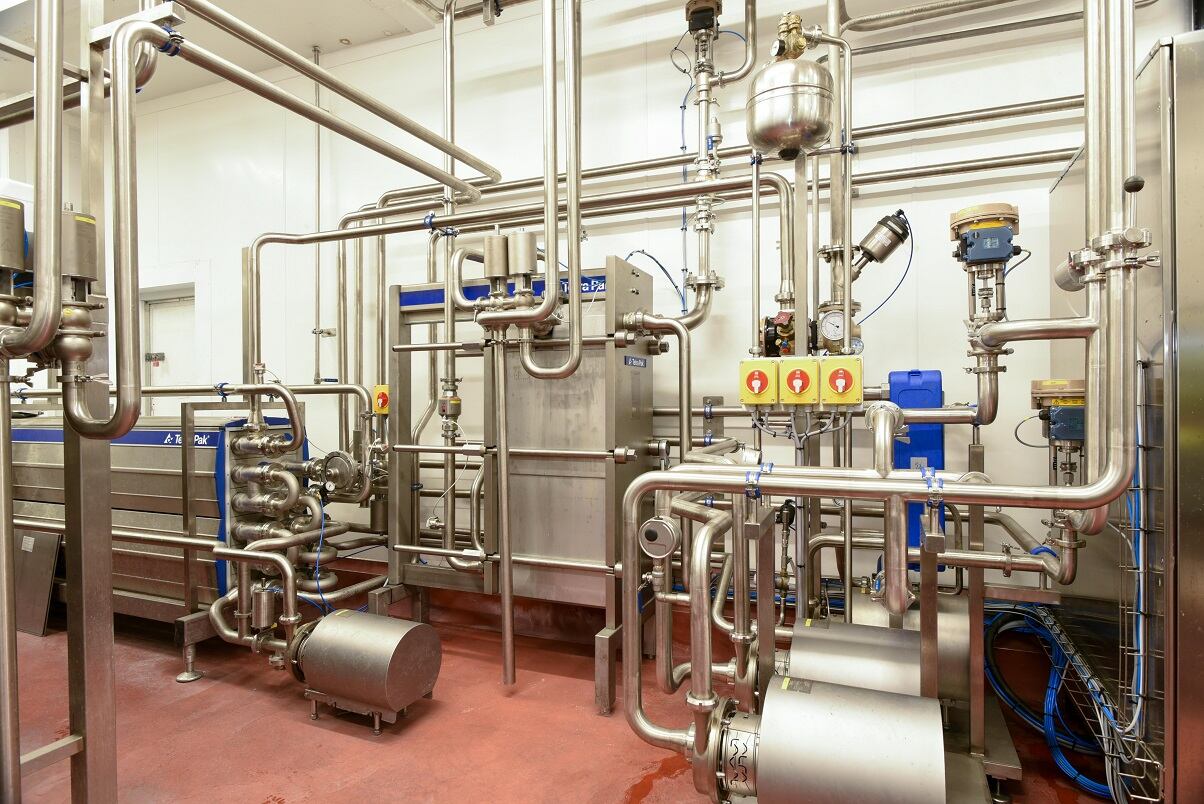
What does Framptons do?
Martin: We own egg product brands in foodservice, but we’re here to create the innovation to help brand-owners get products to retail.
We can produce a few tonnes a week of small-batch products. Equally, we provide large volume to big brand owners.
We make blends, omelettes, scrambled egg, one litre cartons and bulk bag in box for catering and quick service restaurants. It’s about 15% of what we do.
In the rest of the business, the main contributors are plant-based and dairy-based products. Plant-based is about 80%.
We take prepped wet mixes or make from scratch. We have blending equipment, where we can heat, cool, high shear, melt, mix, blend and produce complicated recipes, which we pass through ultra-high temperature heat treatment, and standard dairy and juice pasteurisation.
We have three types of ultra-high temperature (UHT) process: direct steam injection, direct steam infusion and indirect UHT.
Direct steam injection best suits plant-based products. We inject steam in to heat the product, then condense it and vent it off. Soy milks and oat milks have a raw, beany flavour. If you’re trying to create something mild – milk replacement, for example – it’s useful that those flavours get vented off during the steam removal.
We're the biggest UK co-packer of plant-based drinks
Direct steam infusion is designed for high-protein products. Now, the growth area for us is plant-based dairy alternative drinks. Many of the big brands and challenger brands are packed at our site.
We’re the biggest UK co-packer of plant-based drinks. Alpro’s Kettering site produces more, but it’s a brand owner producing its own products.
UHT milk has a caramelised flavour. With injection and vacuum, that burnt milk flavour isn’t generated so highly. It wouldn’t give a milk product that could last six to 12 months at ambient [temperature]. It sets to a jelly after three to four months if treated that way, so we offer this as an extended shelf life product for chilled storage.

Join us on 29 & 30 March for Reformulation: What Next?
With The National Food Strategy’s healthy eating focus, imminent restrictions on the retail promotion of products high in fat, salt and sugar and calls for an EU-wide nutrition labelling scheme, reformulation remains on food manufacturers’ minds. Using a versatile digital platform, this online series will host 5 sessions a day, with interactive presentations, panel discussions and Q&As. With plenty more speakers to be revealed, you can’t afford to miss it. Click here to find out more...
Indirect UHT, where hot steam is the other side of a plate or a tube, does more damage to the milk and milk proteins. You spoil the flavour a bit, but create something stable. That’s what we would use for long-life dairy, a breakfast milk or something with a lot of flavours added as direct steam injection will vacuum off what you want to keep as well as the stuff you don’t want. If you want to trap flavours in – strawberry, raspberry, banana – indirect UHT is better.
Having a flexible system for mixing, blending and heat treatment allows us to cover a broad range of product types.
In the 1990s and 2000s, a large proportion of our business made specialist blends such as Jaffa Cake mix, Bakewell tart mix, and egg custard mix. We’re planning to provide similar business-to-business products for plant-based lines. Many brand-owners supply branded product and retail own-label and we make both on their behalf.
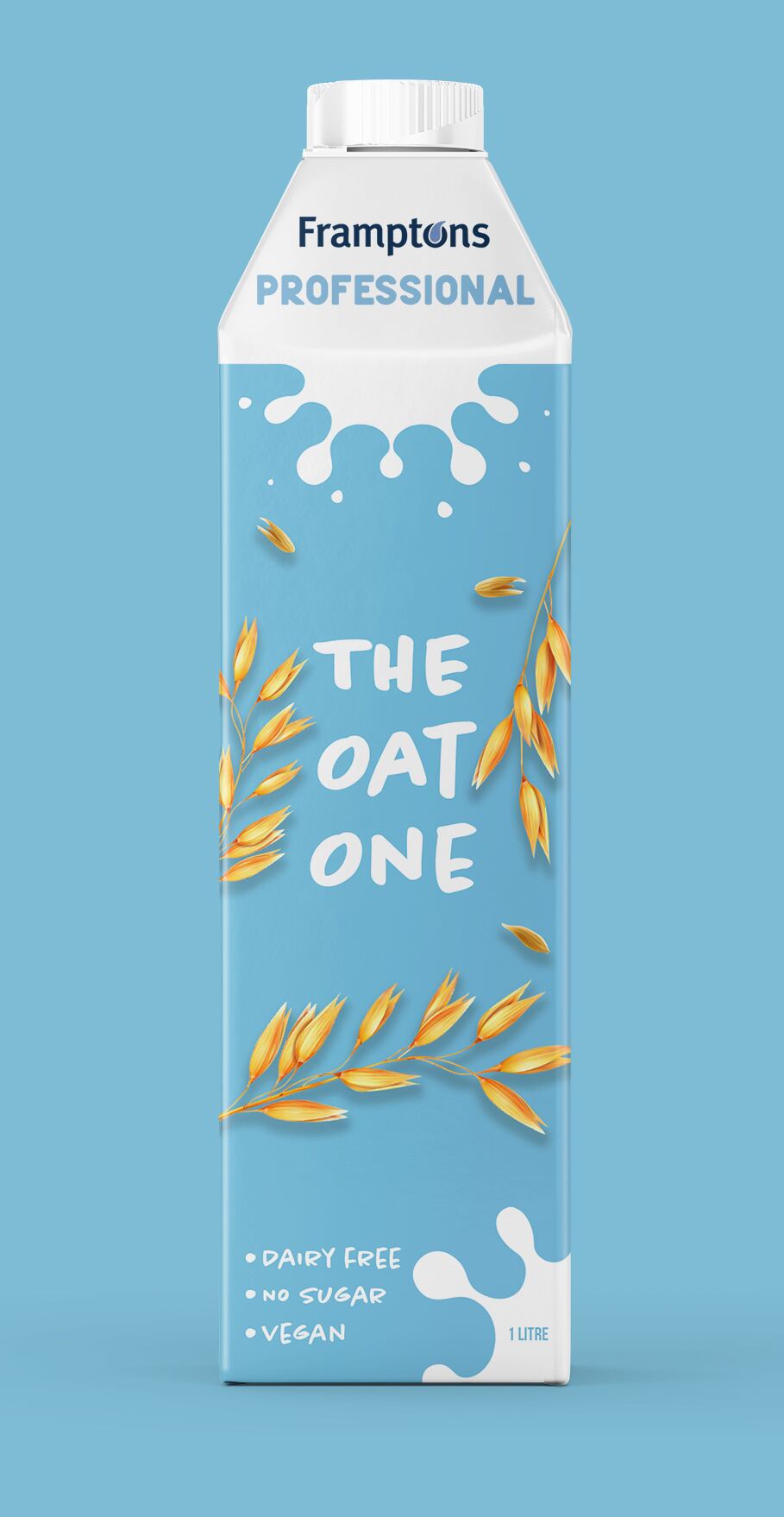
How have filling capabilities developed?
Martin: In the early 2000s, we put in a gable-top filler for egg products. We saw the opportunity to use that for co-packing. Chilled, short-to-medium shelf-life products was the first venture. One product we began co-packing was a soya ‘milk’ needing direct steam injection.
From that, we had a product that could be fully sterile. That opened up aseptic carton filling. We started with the [Tetra Pak] Brik shape and moved to square-based formats. We were then asked in juice and smoothies to move into PET [polyethylene terephthalate] bottles, so that became a capability and still is.
We developed aseptic pack formats: half-litre to litre take-home packs with Tetra Pak and small portion packs (200ml to 330ml sizes).
Two to three years ago, SIG presented the SIG Combidome carton – something radically different to what I saw in the marketplace. There’s a large, centralised cap at the top of a four-sided pyramid. Cartons tend to ‘glug’ when you pour. This pours out straight, like a bottle with a wide opening and looked like a carton that could sit with brand-owners’ bottles in ambient aisles or chillers.
I had to look at a replacement for our old Tetra Pak gable-top carton. Andy has a project, which I initiated to install a Galdi machine, which we hope will have aseptic capability, which will fill 200ml, 250ml, 500ml, 750ml and one litre gable-top cartons. It will be commercially available later this year.
We are the only co-packer in Europe with the facility for low-acid, dairy and plant ‘milk’ products in the SIG Combidome carton format. We plan to take machine two at some stage and look at other SIG carton-filling machines to replace our 200ml-360ml cartons with SIG CombiSmile packs.
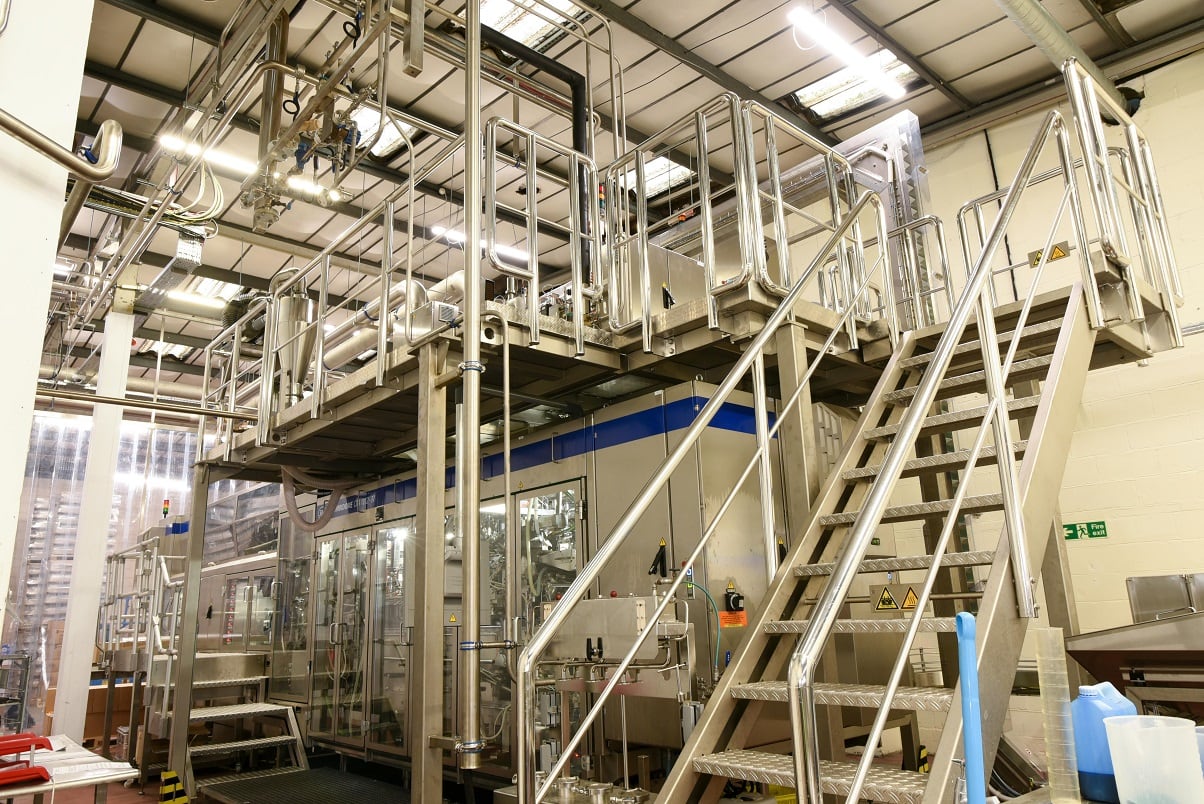
How is Framptons addressing its environmental responsibilities?
Martin: Pre-pandemic we put in a wastewater treatment plant and energy-efficient air compressors. The next phase is gas-fired combined heat and power, burning gas in the most efficient way, recovering heat generated and generating electricity, and a biomass boiler burning wood. That will be fulfilling during the first half of this year.
We had to have a renewable strategy for our older boilers and our power, given we’re moving a lot from pasteurised to high-temperature products. While we’re using a lot of energy, there are constraints in terms of how we can generate that.
The energy used to recycle cans and glass is phenomenal. Their carbon footprint is high, so the paper carton will always win. The small amount of plastic – the cap and the inner membrane – stops the product leaking out. There’s plastic liner in some cans anyway.
The percentage of people with access to home collection is increasing significantly and cartons with caps would be macerated and the components separated, so the cap/carton can be recycled as a unit. On some cartons, there’s an aluminium barrier layer, which is also separated out.
Most customers look for non-fossil-based materials. Paper is Forest Stewardship Council-certified, so more trees are planted than are used to create the packaging. Plastic can be from plant-based materials.
A high percentage of plastics now are collected, not put into landfill, recycled and used to make other products.
The energy used to recycle cans and glass is phenomenal. Their carbon footprint is high, so the paper carton will always win.
How is labour market and supply chain upheaval affecting Framptons?
Rimell: Recruitment has been tough. Production plans have had to be modified and discussions have been held about maximum run sizes, up to 250t runs over 48 hours.
We’re highly automated. Operations has 33 staff on shift. There’s a Tetra Brik Edge line producing 700,000 units a week. We have three people allocated to that production line excluding the process team, so you need highly skilled operators who take time to train.
Martin: The furlough scheme was a lifeline and the CBILS [Coronavirus Business Interruption Loan Scheme] has given us the cash to continue investment. Ian Harvey our chief executive is talking to our MP and through industry bodies has been trying to get the message across that we need access to the right number and the right type of people.
Rimell: We’re not seeing a mass exit, but a steady trickle of [foreign nationals] returning home into employment.
Martin: A lot came from Portugal in the early 2000s, then it shifted more to Eastern Europeans. There would always be those who come for a period of duty to save money, then head home.
Many who joined us over the years have become integrated into the business and have moved up into senior positions.
The UK has become addicted to cheap labour. We have to become more productive.
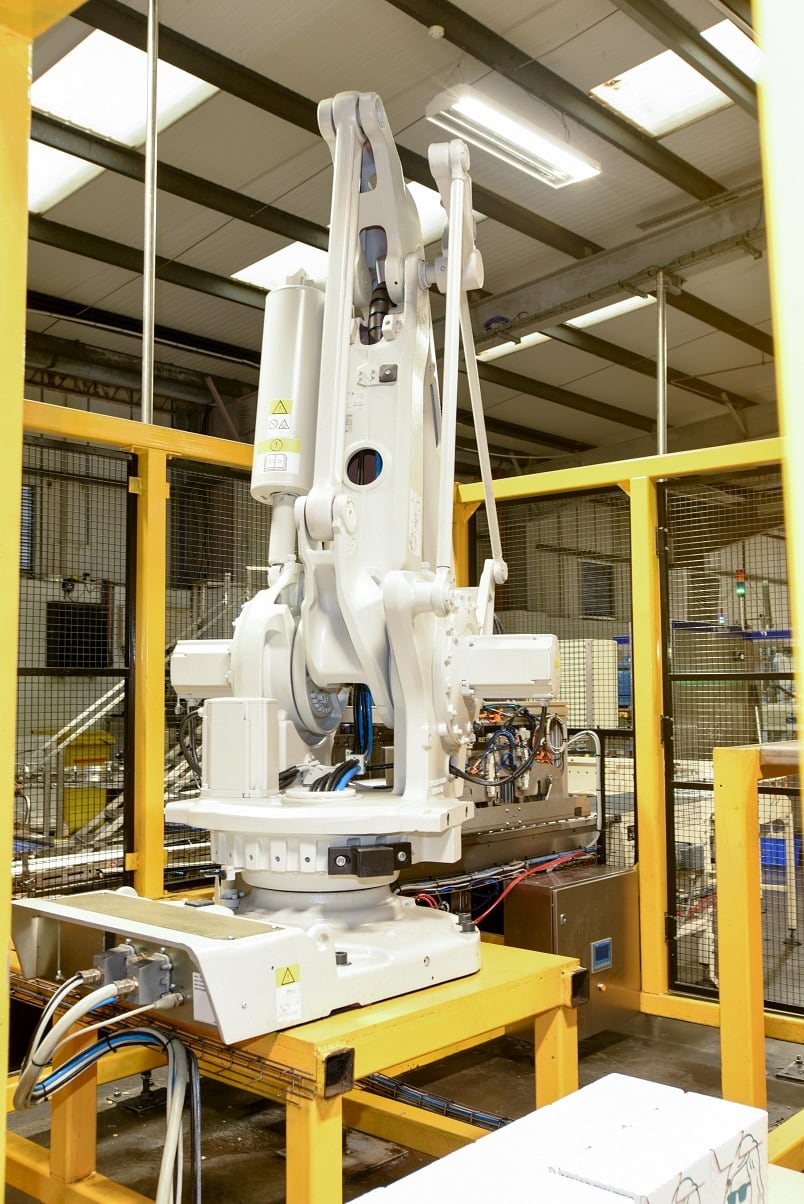
Rimell: We have commissioned a robot on the end of a Tetra Brik Edge line, removing the need for four people per shift – a significant amount of labour we have reallocated.
I’ve got another two lines with end-of-line palletising. From each filler you get a carton collated through a flow-wrap or a box into a unit of two-by-three cartons ready for shelf display. The robot will pick up these collations and build a pallet. We’ll take that to a wrapping station, wrap it and load it, so you get a buffer stock of 30 potential pallets at a loading bay. We’re looking at fully automated in-line wrapping. We are awaiting a new robot for our SIG production line at the start of 2022 to complete a new production line.
The lead time for everything has gone up massively on raw materials and equipment. I couldn’t purchase an inverter for part of my plant quickly. They are quoting 22 weeks. We have never been here before. Our maintenance strategy and asset care plan has got to change drastically to account for this.
From order placement on the SIG robot, we’re looking at six-to-eight-months lead time before commissioning, driven by skills, materials and prices.
How has Framptons adapted to demand for plant-based products?
Martin: We receive several hundred new product enquiries a year. Some we may be unable to assist with. Some, we quickly realise somebody has a good idea, but doesn’t have the resources to get it into a commercial position.
Roughly eight out of ten enquiries are plant-based. Of those, five relate to oat. We now run our own oat extraction plant.
We have a joint venture with Robin Appel – a grain merchant sourcing and controlling the raw material. They have another joint venture by which the oat groats are de-hulled (the husk is taken off) and heat treated so they don’t spoil immediately. They come into our factory, are wet-milled and enzyme-converted and insoluble by-products are removed.
We end up with an oat base mix. That’s formulated to produce UK-produced, UK-processed and UK-packed product to go into local retail. We do soya-, coconut- and hemp-based products as well.
Other products involve pea protein and we have just launched plant ‘milks’ based on potato extract. We don’t use almonds – we’re a nut allergen free site.
We’re going to be making plant-based ‘yoghurt’ for consumers and business-to-business, hard cheese and soft ‘cheese’ spreads
Most brand owners recognise pea, potato and oat have a great local provenance and sustainability story and they make a fantastic product, which is highly functional. It’s mild, goes into tea and coffee industrially and in the kitchen. For the barista function – people are foaming at home – it gives good performance.
We work with two brand partners on plant-based egg alternatives for retail, foodservice and manufacturing.
We’re going to be making plant-based ‘yoghurt’ for consumers and business-to-business, hard cheese and soft ‘cheese’ spreads – we’re talking 15m units a year capability. Those are new investments in collaboration with a customer, although we’ll be offering surplus capacity for general co-packing.
With oat extraction and to accommodate our growing plant-based volume and range, we have an industrial unit we’ll convert into our plant-based centre of excellence. We see that as a key direction.

